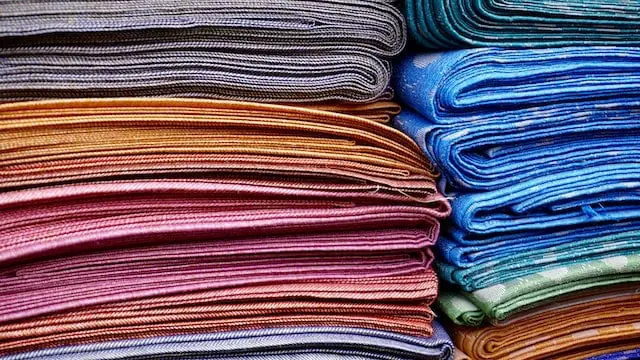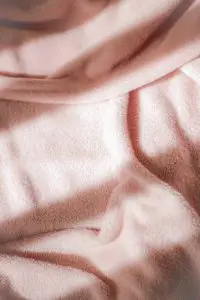Introduction
Despite their differences, polyester and nylon fabrics share many similarities. Both are lightweight synthetic fibers made from synthetic fibers. The two are characterized by their durability, which is much higher than natural fibers. They are also characterized by their ability to respond to the various post-finishing processes that enhance their functionality.
In today’s society, most fabrics are made of one of these two fabrics at least partially, especially sportswear. When faced with making a decision, you wonder if either one of these is better than the other and how much difference they both have when it comes to making a decision.
There are several key differences between polyester and nylon. Understanding these differences will allow you to determine which fabric is most suitable for particular functionalities.
- Introduction
- Polyester vs Nylon: An Overview
- Polyester vs Nylon: Features
- Polyester vs Nylon: Uses
- Polyester vs Nylon: Pros and Cons
- Polyester vs Nylon: Warmth
- Polyester vs Nylon: Environmental Impact
- Conclusion
Polyester vs Nylon: An Overview
Polyester
Among the most popular synthetic fabrics is polyester, which is a polymer or plastic made from ethylene glycol and terephthalic acid. Polyester is manufactured through the process of polymerization, in which monomers are combined under heat and pressure into a polymer. Once the polymerization process is complete, the plastic melts and is thrust into long filaments. These filaments are wound into threads or incorporated with another fabric to form a polyester blend. Despite being scratchy and thick, polyester was still widely used in several applications and industrial settings. Polyester was introduced in the 1930s, shortly after nylon was invented. During the 1970s, polyester became popular because of its striking colors and the ability to make bell-bottom pantsuits. Nowadays, polyester is available in a variety of weights and textures. Although some manufacturers use recycled plastics to produce polyester, the process is more costly.
Nylon
Another polymer produced from petroleum is nylon, a polymer made by combining individual monomers into a polymer. As with polyester, nylon polymers are melted from pellets into long strings that are then pushed through industrial nozzles to form filaments. Nylon is composed of adipic acid and hexamethylenediamine monomers. The process of creating polyester and nylon has similarities, but the bonds that hold the monomers together are different. In nylon production, weak hydrogen bonds hold the monomers together, but in polyester production, stronger bonds hold them together.
With the invention of nylon in 1938, just a few years before polyester, the fabric world was radically changed as the first synthetic fabric. Since nylon was needed during World War II to produce items such as parachutes, nylon became instantly popular due to its lightweight and silky properties. Today, nylon continues to make an excellent fabric for women’s apparel, and its weatherproof properties make it an ideal material for outdoor clothing. During World War II, nylon was used to make silk-like underwear for women.
It is important to note that both materials are non-biodegradable and that the option of manufacturing them from recycled materials remains expensive; this is particularly true for nylon.
Polyester vs Nylon: Features
There are many similarities between polyester and nylon as far as their features and characteristics are concerned, but there are also some specific characteristics that distinguish each from one another.
Comfort
It goes without saying that nylon is the more supple of the two materials. Furthermore, its texture makes it the softer of the two materials. When polyester came onto the market, it was seen as thick and scratchy compared to nylon.
In spite of the fact that nylon continues to be a popular fabric for underwear and dresses, polyester has become a natural option when it comes to home decor. Polyester’s more delicate threads, high thread count, and innovative manufacturing methods have made it an excellent material for bed sheets.
Durability
In terms of durability, both polyester and nylon are impressive. However, whereas nylon has a higher tensile strength than polyester, polyester has greater resistance to a range of factors that will be discussed below.
Flammability
While nylon and polyester are fire-resistant, they are still susceptible to melting at higher temperatures. Because of this, these materials have been chemically treated in order to enhance their flame resistance. While it is true that polyester is a safe material for children’s nightwear because it has a longer burning time than other materials, it remains a safe material for children’s nightwear.
Abrasion Resistance
With its superior stretch and recovery properties, nylon is the preferred choice for upholstery fabrics and threads as well as materials that require heavy traffic, such as carpets and artificial surfaces, due to its better elastic and abrasion resistance properties. Nevertheless, nylon absorbs more moisture than polyester (moisture regain for nylon is 4%, compared with 0.4% for polyester) and stretches approximately when wet. As a result, polyester is the preferred material for tents because it can be stretched by 3.5% beyond its original length.
Odour Resistance
Among the significant differences between polyester and nylon is the odor retention properties of the fabric. Polyester absorbs body oils, which cling to the fabric even after it has been washed and dried. As opposed to that, nylon is odor-resistant as it does not retain body oils or scents, which prevents it from attracting bacteria.
Mildew Resistance,
For the most part, polyester and nylon are resistant to damage and mildew, which is a condition that is not true for other materials. Mildew, on the other hand, is a white, powdery mold that is usually formed when a surface is moistened.
Water Resistance
Neither polyester or nylon is waterproof, but polyester allows water to bead on its surface rather than soaking up moisture, which makes it more durable than nylon. In any polyester fabric, there are tiny air holes that may allow water drops to pass through with enough pressure. Nylon has the ability to not only absorb water but also to wick it away from the body and distribute it evenly across its surface, and that is what makes nylon so appropriate for activewear and workout clothes.
Breathability
Which fabric is more breathable? Since polyester lacks breathability, it can be extremely uncomfortable to wear during physical activity. In contemporary times, cotton has been blended with nylon as a means to increase the fabric’s breathable qualities. As a result of its moisture-trapping properties and tendency to cling to the skin, nylon is more efficient in wicking moisture than polyester.
Cost
A variety of factors, including design, brand, and location, will influence the cost of either product. Nylon is typically more expensive since the production process is more complicated, making it the more expensive fabric. However, polyester has a relatively low production cost, which makes it more widely available.
Easy Care
The two materials are machine washable, wrinkle-resistant, and easy to maintain. However, nylon absorbs water and takes longer to dry, compared to polyester. Keep both materials away from high temperatures during drying and ironing to prevent melting or burning. You should air dry both materials to prevent them from melting or burning. You should wash nylon by hand to reduce the likelihood that it peels.
Polyester vs Nylon: Uses
In addition to producing a variety of items, polyester and nylon can also be used in the production of home furniture, electronics, and clothing. Polyester and nylon can be interchangeably used to make backpacks, bags, and jackets. However, polyester is widely used in the production of clothing, compared to nylon. In the modern era, approximately 69% of clothes are made from synthetic fibers, including elastane, nylon and acrylic. Polyester, which accounts for 52% of all fiber production, is the most common type of synthetic fiber. Nylon is used in more industrial applications such as blouses, outdoor clothing, underwear, and dresses, as well as other textiles.
General Use
Although both nylon and polyester can also be used to make backpacks and bags, nylon has superior water resistance, durability, and it can also be used for outdoor gear and outerwear, unlike polyester, which is mostly used for branding purposes.
Apparel Use
Due to the unique properties of polyester, it is used to create a wide variety of clothing items that are both functional and fashionable, from blouses, dresses, and lingerie to raincoats, windbreakers, ski wear, and cycling wear.
Home Furniture
A number of household items, such as curtains, bedsheets, draperies, carpets, and pillowcases, can be made from both nylon and polyester, both of which are handy in the manufacturing process. The nylon carpet is more durable than the polyester carpet, even though nylon costs more, as the nylon carpet retains many of its characteristics after many years of use. A polyester carpet is much more affordable and stain-resistant with a special coating. However, as a result of this, these carpets will need to be replaced frequently, and they will not last as long as nylon carpets.
Industrial Use
There are also some industrial uses for polyester, including hoses, rooms, nets, thread, upholstery for automobiles, and power belts. As well as having a wide range of industrial applications, nylon is also used in a wide range of products such as conveyor belts, tire cords, hoses, seatbelts, tarpaulins, sleeping bags, parachutes, tents, among others.
Polyester vs Nylon: Pros and Cons
Pros of Polyester
- In addition to being durable, polyester is also capable of functioning well in all types of weather.
- The material does not absorb water.
- Polyester fabric is machine washable and easy to maintain
- As a result of its high versatility, it is a great choice for a wide variety of clothing.
- The low cost of production makes it cost-effective
- Stretch and shrink resistance
- Fade-resistant
- Resistant to mould, UV rays, and flames
Cons of Polyester
- There is a lack of breathability in polyester.
- It absorbs body oils and retains odors
Pros of Nylon
- A nylon material has a high tensile strength and is very durable.
- Resistant to mould and flames
Odor resistance - It is easy to maintain
- Inexpensive
Cons of Nylon
- Breathability is limited
- It may generate static electricity.
- In comparison with polyester, it does not provide as much water resistance.
- It is not UV-resistant
- When exposed to sunlight, it fades quickly.
- Suitable for a limited range of clothing types
Polyester vs Nylon: Warmth
The warmer of the two materials, nylon clings to the body more than polyester. Nylon remains close to the body in any event, and the tighter it is, the less breathable it is. Polyester, on the other hand, offers minimal breathing ability but is not as warm as nylon. As a result, this fabric traps body heat and sweat and does not allow air to pass through.
Polyester vs Nylon: Environmental Impact
Polyester and nylon are synthetic fibers, therefore are not biodegradable. Both textiles require significant energy, chemicals, and waste to create. Although, with the advancement of modern technology within the fashion and textiles industries, recycled variations of both nylon and polyester are possible. These alternatives are much more eco-friendly and have a higher biodegradable spectrum. It is also important to be aware of the chemicals used to keep these materials waterproof as this is another factor which increases the environmental footprint of these textiles.
A Great Online Class: Color Theory for Textile Projects by Domestika
If you are interested in learning more about how you can create a successful name for your business, we recommend taking a look at the online class “Color Theory for Textile Projects”.
The course is currently under promotion, but you can use the discount code: T_BROWNLEES-PROMO to get an additional 10% discount on your purchase.
This online class offered by Domestika, at a very inexpensive price covers all you need to know to develop your textile project by leveraging color theory to create the perfect color palette. If you apply to the course through the link below you’ll be supporting 440 Industries, and we thank you for it!
Conclusion
Compared to polyester, nylon has the advantage of being softer and more weather-resistant, while polyester is less water-resistant. However, choosing the right fabric remains a significant factor in determining its performance. It is important to consider the function of the fabric before purchasing, even though each fabric has its own unique strengths and weaknesses. Although polyester is relatively popular due to its durability and its ability to withstand the elements, it does not have the same weather-resistant properties as nylon. However, both polyester and nylon are excellent fabrics due to their versatility and durability.







